55th Annual Auburn Auction Results
Worldwide Auctioneers held their 55th Annual Auburn Auction this past weekend in conjunction with the Auburn Cord Duesenberg Festival and achieved some strong results on the auction block. The event was well-attended with plenty of bidders in the room as well as online and bidding by phone.
A 1930 Cadillac 452 V-16 Roadster sold for a very strong $571,200 while a 300 SL Gullwing was approaching $2 million when the bidding was closed and they sounded quite confident that it would sell by the end of the weekend. Let’s take a look at some highlights from each day of Worldwide Auctioneers’ Auburn Auction.
Thursday in Auburn:
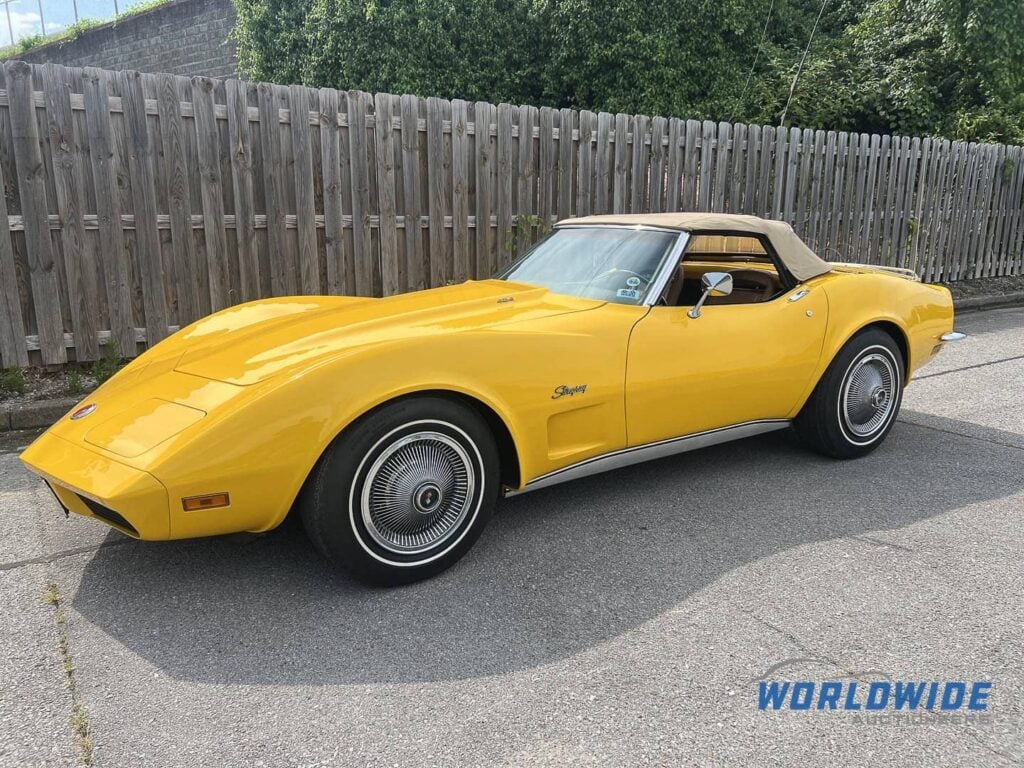
The 1973 Chevrolet Corvette marked a significant turning point in the model’s history, as it began to shift from a raw muscle car to a more refined grand touring sports car. This transition was heavily influenced by new federal regulations concerning safety and emissions, which mandated changes to both the body and the engine.
The most notable visual change was the introduction of a new, body-colored urethane front bumper that replaced the chrome bumper of previous models, designed to absorb a 5 mph impact. This “rubber bumper” nose gave the car a more integrated, streamlined look and was part of a larger effort to meet stricter safety standards. In addition, steel guard beams were added to the doors, and the overall ride quality was improved with new body mounts and sound-dampening insulation.
Under the hood, the 1973 model year marked a watershed moment for the big-block Corvette. It was the final year a 454 cubic inch big-block engine would be offered, with the LS4 variant producing a respectable 275 horsepower. While this figure was a decrease from previous years due to the new net horsepower rating system and emissions controls, the big-block still provided excellent torque and performance.
This engine, combined with a 4-speed manual or automatic transmission, offered a powerful, yet increasingly comfortable, driving experience. It remains highly collectible as many enthusiasts view the ’73 model year with the LS4 engine as the last gasp of the muscle car era, before regulations resulted in a marked decrease in performance.
The example sold by Worldwide Auctioneers benefits from a nut and bolt restoration and is a matching-numbers example. It features power windows, power steering, power brakes, and even factory-equipped air conditioning. This NCRS Top Flight Award winning Corvette was well-bought at $45,920.
Friday in Auburn:
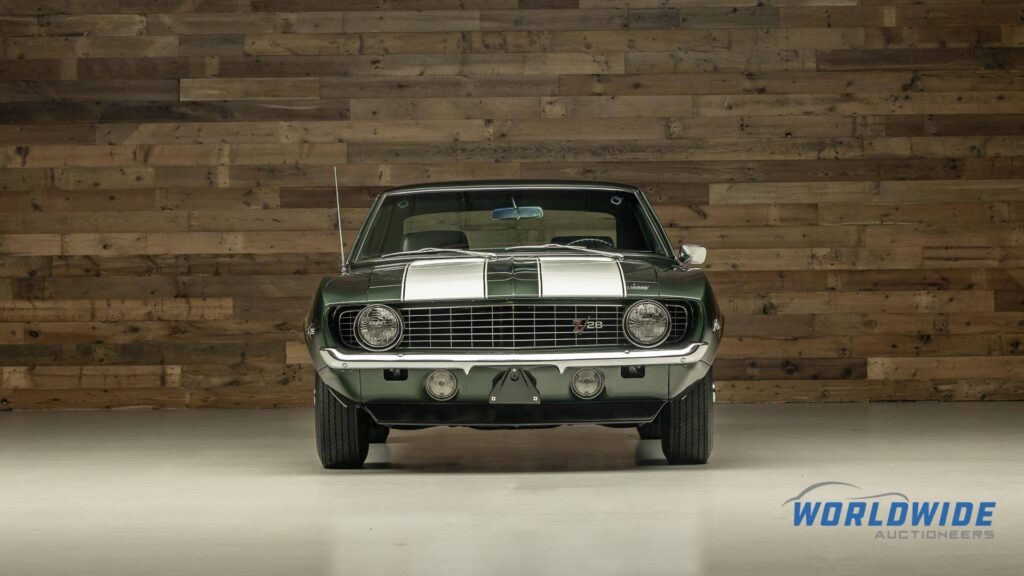
The 1969 Chevrolet Camaro Z/28 holds a special place in muscle car history due to its strong connection to road racing. Created as a homologation special for the SCCA Trans-Am series, the Z/28 was designed to be a street-legal race car. At its heart was a high-winding, small-block 302 cubic inch V8 engine, officially rated at a conservative 290 horsepower to meet racing regulations, but actually produced significantly more power.
This unique engine, combined with a heavy-duty suspension, four-speed manual transmission, and power front disc brakes, made the Z/28 an agile and formidable competitor on the track. While it was the most produced Z/28 of the first generation, it remains highly collectible to this day.
The example sold by Worldwide Auctioneers was equipped with a four-speed manual transmission by the factory and features a date-correct 302 cubic inch V8 engine. As it was an early production example it’s even more of a rarity as a pre-cowl hood induction model.
Benefitting from a thorough restoration, this Z/28 was meticulously cared for by a previous owner for 40 years. It was well-bought at $82,320.
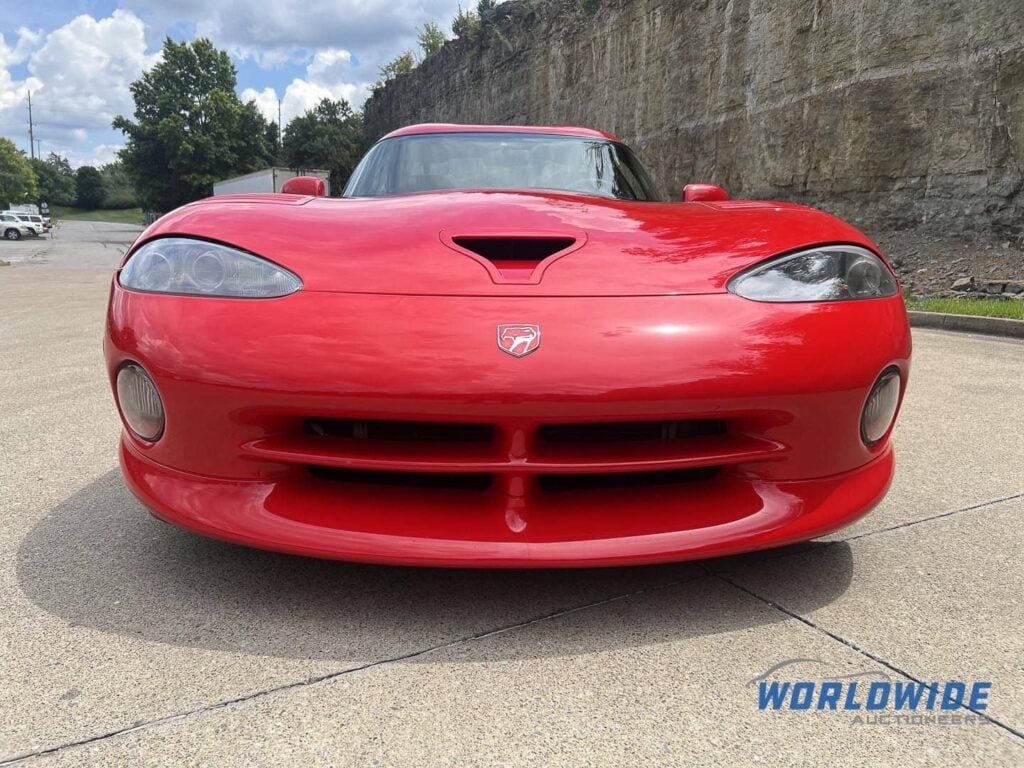
The 1997 Dodge Viper GTS was a significant evolution of the raw, performance-focused American supercar. While the original Viper RT/10 roadster was a bare-bones machine that drew inspiration from the Shelby Cobra, the new GTS coupe brought a level of refinement and enhanced performance. Introduced in 1996, the GTS featured a distinctive “double bubble” roofline, a design element inspired by the classic Shelby Daytona Coupe that allowed for drivers to wear racing helmets.
The GTS was more than a simple redesign – it was a massively improved car. Over 90% of the GTS was new compared to its roadster sibling, including a more rigid chassis and an upgraded 8.0L V10 engine. This new engine increased output to 450 horsepower, a significant increase that allowed the car to achieve a 0-60 mph time of around 4.0 seconds.
The example sold by Worldwide Auctioneers had covered just 3,300 miles since it was new and came from its original owner. It was one of just 706 finished in red for the 1997 model year, a nice throwback to the first-year of the RT/10. It was well-sold for $86,240.
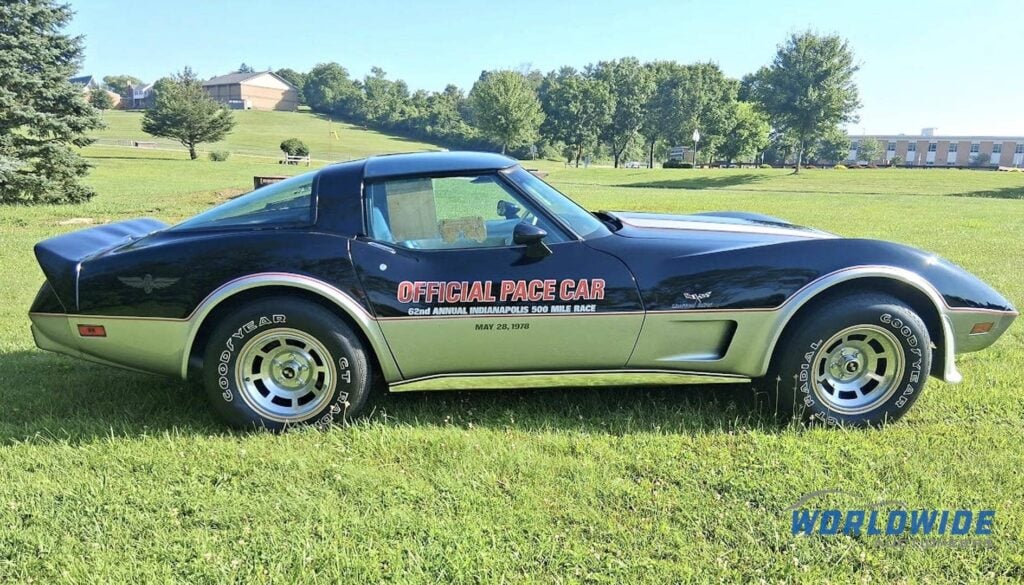
The 1978 Chevrolet Corvette holds a significant place in the model’s history as both 25th anniversary of the introduction of the Corvette, but also as the first time a Corvette was chosen as the official pace car for the Indianapolis 500.
To commemorate this special occasion, Chevrolet produced a limited-edition replica of the pace car for public sale. The car featured a distinctive two-tone black and silver metallic paint scheme with a red pinstripe, along with new front and rear spoilers and special “Indy 500” graphics.
Originally, Chevrolet planned to build only 300 replicas, but due to overwhelming demand, production was expanded to over 6,500 units, proving once again the desire for an American sports car.
The one sold by Worldwide Auctioneers is stunningly original, still wearing its window sticker and having covered just 3,500 miles since it was new. It features the now-iconic pace car livery and badging as well as factory air conditioning, power windows, and power locks.
This Corvette was well-bought at $31,360.
Saturday in Auburn:
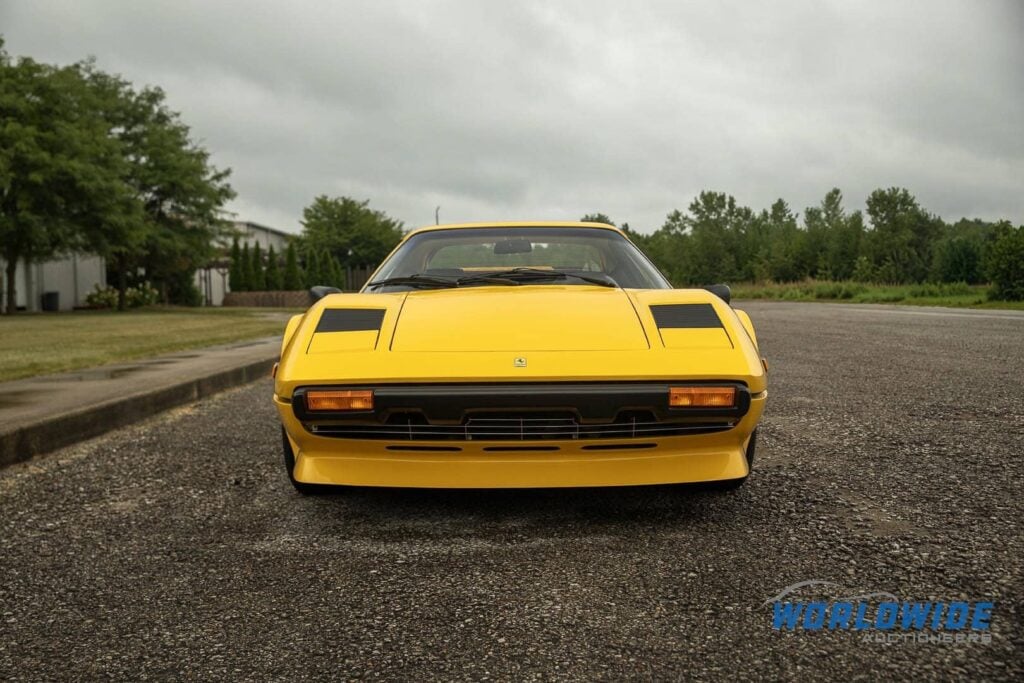
The Ferrari 308 GTB, which debuted in 1975, was a significant model for the Italian automaker, serving as a replacement for the outgoing Dino 246 GT. Designed by Leonardo Fioravanti at Pininfarina, its sweeping curves and mid-engine layout were a stark contrast to the angular styling of its 2+2 sibling, the 308 GT4.
The 308 GTB was initially introduced with a unique feature: a fiberglass body, which made the car exceptionally light. However, beginning in June 1977, Ferrari transitioned to the more traditional steel body construction, increasing the car’s weight by about 150 kg.
The 1977 model year is particularly notable because it marks this transition from fiberglass to steel, and also saw the introduction of the targa-topped 308 GTS at the Frankfurt Motor Show.
Power came from a 2.9L, transversely mounted V8 engine with four twin-choke Weber carburetors. This engine produced 255 horsepower in European variants and 240 horsepower in the US market due to emission regulations. The 308 GTB quickly became an iconic model for Ferrari.
The example sold by Worldwide Auctioneers came from a single owner spanning 29 years who entered the car in numerous FCA events, winning multiple Platinum Awards. It covered just over 50,000 miles since new and was well-bought at $86,240.
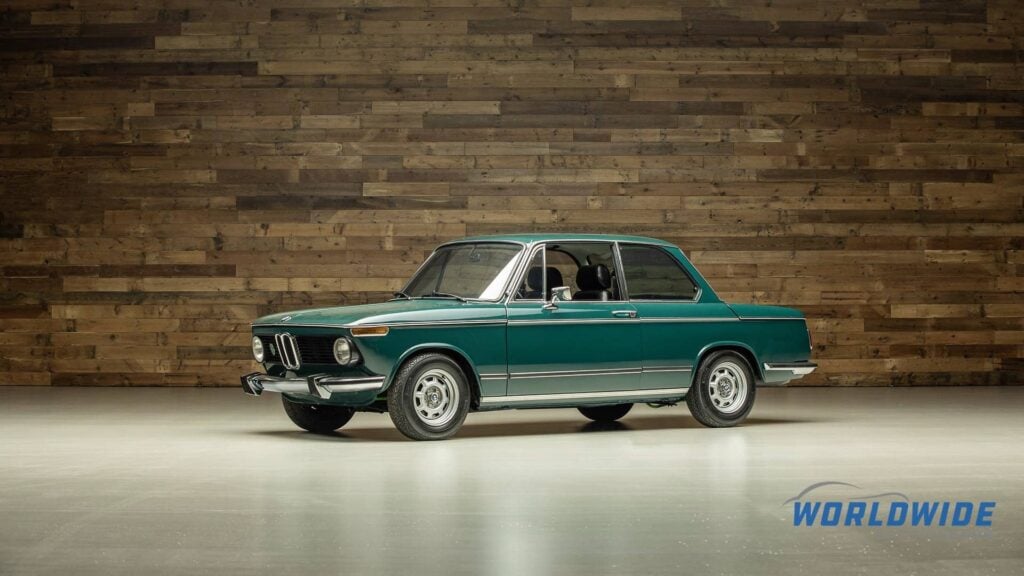
The 1974 BMW 2002tii Coupe represents a significant point in the evolution of the iconic 02 Series, a line of compact sedans that helped define BMW’s cement BMW’s reputation. The 2002tii, introduced in 1971, was the high-performance variant of the standard 2002, replacing the earlier 2002ti model.
The “tii” designation stood for “touring international, injection” and indicated the car’s most important upgrade: a Kugelfischer mechanical fuel injection system. This system boosted the output of the 2.0L inline-four engine to 130 horsepower, a considerable improvement over the carbureted models.
The 1974 model year featured a facelift that included the introduction of larger, square taillights and a black plastic grille insert, distinguishing it from the earlier “roundie” models. It also marked the final year the 2002tii was imported to the US market.
The example sold by Worldwide Auctioneers benefits from a cosmetic restoration and some mechanical upgrades including an engine from a 1975 model year 2002tii that’s paired with a four-speed manual transmission. It took part in the 2024 Tejas Turismo Driving Tour Rally that covered 700 miles so it certainly seems to be a car its new owner can take on the road and really enjoy.
All things considered this was well-bought at a reasonable price of $32,480.
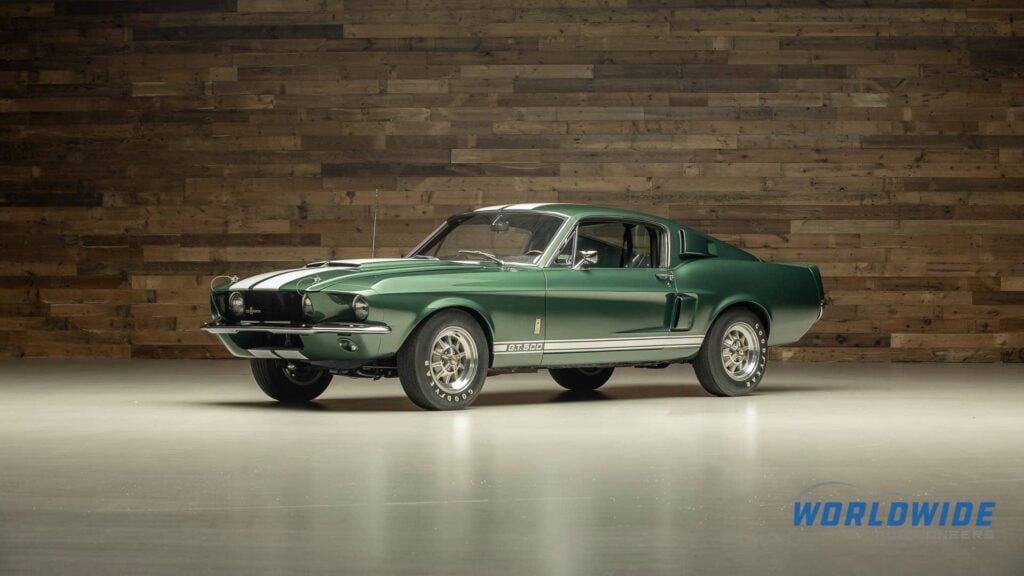
The 1967 Shelby GT500 was a significant evolution for the high-performance Mustang, moving beyond the track-focused GT350 to become a grand touring muscle car. Carroll Shelby utilized the redesigned Mustang body to house squeeze a massive 428 cubic-inch “Police Interceptor” V8 engine under the hood. The big block V8, rated at 355 horsepower, transformed the car into a more powerful and muscular machine.
Its aggressive styling cues, including a fiberglass hood with functional hood scoop and ever-recognizable side scoops quickly lead to the GT500 taking a well-earned position in the pantheon of American muscle cars.
It should be no surprise that this matching-numbers example, complete with a Deluxe Marti Report and wearing its factory-correct color combination performed very well on for Worldwide Auctioneers. It was very well-sold at $336,000.

The 2003 BMW Z8 Alpina Roadster stands as a unique and luxurious epilogue to the Z8’s short production run. While the original Z8 was a high-performance sports car with more of a focus on sharp handling and featured a manual transmission, the Alpina V8 Roadster was re-envisioned as a refined grand tourer.
Produced in a limited run of just 555 examples, the Alpina replaced the standard 4.9L V8 with a softer-tuned 4.8L V8, taken from the 745i, paired with a five-speed automatic transmission. This change, along with a smoother riding suspension and a more luxurious interior, transformed the car’s character from a raw sports machine to a more comfortable and exclusive touring car.
The example sold by Worldwide Auctioneers showed just 7,355 miles at the time of cataloging and is one of just 37 Z8 Alpina Roadsters finished in Jet Black over a Sport Red and black leather interior. The standard BMW Z8 is a continuous favorite at many classic car auctions and this Alpina Roadster was well-sold at $266,000.
